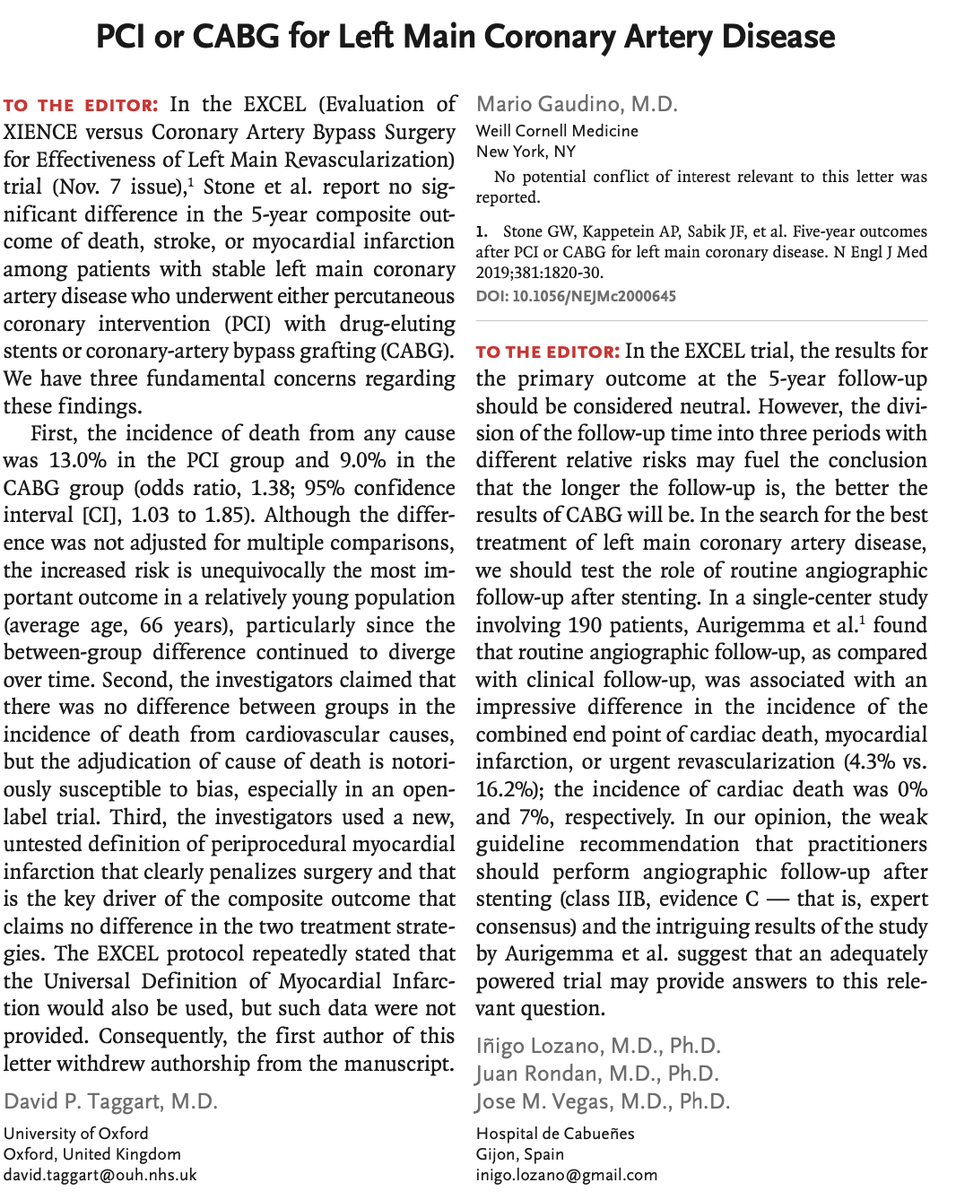nejm.org/doi/full/10.10…
🧵 in a nutshell:
- the EXCEL investigators had the UDMI data, although they said they didn’t
- It shows higher MI risk for PCI

@BBCnewsnight have had this data since december, why did it take 7 months more? Gosh @NEJM, what is up?
/2
/3
/6
/7
- regardless of MI definition, the hazard of CV death is 2-3x if you have an MI after PCI or CABG for LM
- if you have UDMI MI after CABG, the hazard of death is greatly increased.
/10
/11
/12

/13
/14
We have to refer to @BBCnewsnight, who had access to this data and ran the analysis (as reported in @AATSJournals JTCVS by Mario Gaudino, Nick Freemantle and @dompagano): the 5yr composite shows an HR of 1.4, P = 0.009!
/18

Leaving the record stand seems worse than the surgisphere debacle of invented data. We have been asking for this data for close a 1 year, and it was all there the whole time.
/19
/20
/22
- @NEJM, this should have been a retraction notice, and the paper should have been republished with all of the data and conclusions stating the true results. Not a response to LTTE. This is a disgrace.
/23









